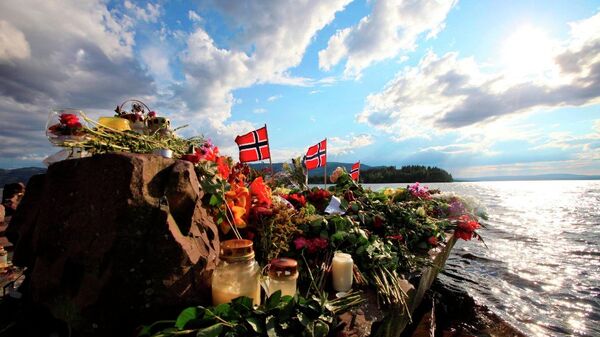Neighbours to the planned national memorial site opposite the island of Utøya, where 69 people were killed by terrorist Anders Behring Breivik on 22 July 2011, have sued the state and the Labour Party's youth wing for endangering their mental health through "terrorist tourism".
The memorial site on the Utøya quay opposite the eponymous island will consist of a large staircase and 77 three-metre-high columns in bronze – one for each of the 77 people who were killed in the government quarter and on Utøya, the newspaper Dagsavisen reported.
The neighbours' lawyer Ole Hauge Bendiksen said the planned memorial site will pose a risk of causing injury, suffering, and discomfort to his clients. Many of the 16 neighbours were personally involved in rescuing young people during the terrorist attack against Labour's youth camp on Utøya on 22 July 2011 and were left to deal with their traumatic memories.
Bendiksen argued that the memorial site will have a "comprehensive and dramatic expression" and be the subject of "significant terror-traumatic tourist piligrimages".
"That is the entire point of the memorial site, therefore it will be likely to become a standing reminder and a risk factor for re-traumatisation", Bendiksen said.
Bendiksen contended that the creation of the site will also lead to negative psychosocial consequences for the local community.
"The local environment has been quite divided, and that division is quite strong. It creates further tensions in an already vulnerable environment", Bendiksen said.
According to the lawyer's own calculation, 86 percent of those who live within a 1-kilometre radius around the Utøya quay are against the memorial site.
Illustrasjon fra Statsbygg's rapport om anbefaling av #Utøyakaia som nasjonalt minnested. Ser muligheter - dette kan blir vakkert og verdig. pic.twitter.com/4iLLiSpcM8
— Lisbeth Royneland (@LisbethRyneland) June 15, 2017
By contrast, Pål Martin Sand of Labour Youth argued the planned memorial is important for survivors and relatives to put the entire process behind them. He also assured that the memorial site won't be visible from the road or from any of the plaintiffs' homes.
"A lot of adjustments have been made to take care of the plaintiffs' wishes, and we believe that the establishment of this memorial site in itself will not lead to psychological damage or additional damage", Sand said, citing support from "leading professionals within trauma psychology".
In turn, Bendiksen emphasised that he is prepared to take the case all the way to the European Court of Human Rights (ECHR) if necessary.
Neighbours believe the memorial site violates both the Neighbourhood Act and Article 8 of the European Commission of Human Rights, which, among other things, guarantee peoples' right to respect for private life, family life, and home.
Statsbygg: Statsbygg inviterer tilbydere til møte om Utøyakaia-minnestedet - https://t.co/AKDf3fhRqH pic.twitter.com/RHMnSH5Wtn
— nyhetsrommet.no (@nyhetsrommet) January 26, 2020
The terrorist act by Anders Behring Breivik that left 77 dead, the bloodiest in the country's peacetime history, has left a deep scar on the Norwegian psyche, becoming the plot of several films and entering school curriculum.
In July 2011, Breivik, disguised as a police officer, bombed Oslo's government quarter, whereupon he proceeded to gun down dozens of attendees of the Labour Party youth camp, most of them teenagers.
On the day of the attacks, Breivik distributed a manifesto called "2083: A European Declaration of Independence", where he stated his opposition to multiculturalism and Islam and blamed feminism for what he called Europe's "cultural suicide".
Later diagnosed with narcissistic personality disorder and antisocial personality disorder, Breivik has since been serving Norway's harshest sentence of 21 years in solitary confinement. Breivik has three cells, outdoor views, and is allowed to exercise, play video games, and watch television. According to Norwegian law, his sentence can be extended indefinitely.




